This post as a distillation from Chapter IV of my upcoming book: Unleashing the Power of Your Story
smashwords, Winter, 2013.
My last post focused on learning to see your current story. This entry is about creating a new one.
You Can Change your Story
Remember that we are exploring the story you have told yourself about your life experiences. You are not a victim here. You created the story, and you can change it. You can come to reframe it and see your story anew–as a source of grace and wisdom rather than as a one of hurt and constraint. You can also learn to modify the parts that hold you back, emphasize the parts that work, and create a new leadership story that is more aligned with your highest aspirations. This learning process may happen in a step-by-step fashion or more organically, but, either way, the elements of adopting a new story are the ones below.
Learn to See your Old story
Seeing your systemic story (previous post) helps you identify your patterns of behavior over time and the assumptions that support them. Usually we make these assumptions without even realizing we are doing so; they are implicit. For example, if your story is about not pushing back on authority figures, an underlying assumption is probably that such behavior will impact you negatively. Through story work, our implicit assumptions can become explicit and, therefore, more easily changed.
Ask yourself, “Do the behaviors, thoughts, feelings, and assumptions that comprise my story really fit my present day situation?” Often the answer is no. They may have been effective in the earlier situation(s) for which you developed them, but now they are not.
Once you see your story, alternatives become almost immediately apparent. In the example above, an alternative behavior is to speak your mind diplomatically in front of superiors, and a different assumption would be that so doing actually causes them to see you in a better light and respect you more
Identify how you want to be as a leader
At this point, you have a good picture of your systemic story, how it has contributed to patterns of behavior over time, how it plays out in present day high stakes situations, and what some other options may be.
Reflect on how you want to be as a leader. Picture yourself as being that leader. Then, identify specific behaviors, thoughts, and feelings that you want to be engaging in. Notice and adopt key assumptions that support these new ways of being.
Let’s say your story includes something like: “I never say no to new opportunities and challenges because I don’t want to be seen as inadequate.” As a result, you get overloaded and stressed. You have thought about a number of possible alternatives. The new story you choose is, “I say yes when I truly want to, I say no when that is called for, and I negotiate when I think appropriate. My life is in balance.” Then identify specific behaviors and assumptions that will support your new story, for example, the behavior of sometimes saying no to authority and the assumption that they, rather than thinking less of you, will respect you for standing up for yourself.
Undertake Behavioral Experiments
To bring your new story into being, identify specific behavioral experiments–situations in which you will try out your new behaviors and assumptions. For example, “In our upcoming budget meeting, I am going to state my position very clearly and not cave in when people question me.” Again, you might begin your experiments in situations that are lower risk and later try them in situations that are higher risk–holding your own in the budget meeting may be less risky for you than opposing your boss in a 1/1 stand off.
Pay attention to what comes up
Try your experiments and notice what comes up for you—what you think, what you feel, what you say to yourself. Chances are you will experience both some satisfaction at having done something new and some anxiety in having tried something unfamiliar. Affirm your feelings of satisfaction and notice the thoughts and feelings from the old story. Notice them but don’t get tangled up in them. Metaphorically step back from them, see them, and recognize that they are part of the normal mix of things but that you don’t have to let them be in control. Choose to act in ways that support what you want to create.
When you are trapped by your old story and engage in less than optimal responses, your story is in the driver’s seat. When you choose and practice a new story, your choice is in the driver’s seat.
Sustain the Changes
Finally, to create sustainable changes in your behavior, make aligned, supportive changes at three key levels of your life system. Shift your behavior (your face to face system). Modify how you think and feel—practice adjustments in your thinking and feeling (your internal system) that support the behavioral changes you have made. And lastly, create elements in your social environment (your larger social system—family, organization, and/or community) that also foster the new way of being e.g. modifying your job description with your boss, changing organizations, tapping into your professional support network.
Reflection and Practice
Set aside an hour to reflect on your current and desired leadership stories.
- Reflect on a recent leadership challenge that was high stakes for you. In your mind, put yourself into that situation. Notice what you were thinking (your self talk), what you were feeling, and what you did. Identify the assumptions you were making that lay under what you did. In all likelihood, you now have a pretty good version of your systemic story.
- Identify the kind of leader you want to be as you face future leadership challenges. Identify the thoughts, feelings and behaviors you want to exhibit. Identify new assumptions that support these new ways of behaving.
- Select 1-3 upcoming situations in which you will practice your new way of being as a leader.
- As you are trying new things out, notice what comes up for you. Notice your satisfaction. Also notice the voices that are trying to dissuade you from your new way of leading. Simply notice them, but don’t get enmeshed in them. Say to yourself, “that’s just my self talk. Those are just some of the things that come up, but I don’t have let them be in control.”
- Choose to engage in your new behaviors, notice the results you get, and notice your satisfaction at having successfully done something new.
- Continue with your experiments until the new ways of leading became a natural part of your way of being.
Steve is a senior executive coach and consultant. He has developed and successfully uses a powerful approach to leadership coaching, Creating your Leadership Story, which enables leaders to make deep, lasting improvements in their leadership effectiveness in short periods of time. He and a group of partners created a breakthrough educational program, Coaching from a Systems Perspective, in which you can significantly enhance your abilities as a systemic leadership coach.
If you would like to learn more about systemic approaches to leadership or story work, feel free to call or email Steve:
Steven P. Ober EdD
President: Chrysalis Executive Coaching & Consulting
Affiliate: Systems Perspectives, LLC
Office: PO Box 278, Oakham, MA 01068
Home: 278 Crocker Nye Rd., Oakham, MA 01068
O: 508.882.1025 M: 978.590.4219
Email: [email protected]
Website: www.ChrysalisCoaching.org
Leadership Blog: https://staging.management.org/blogs/leadership











